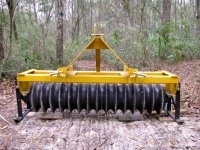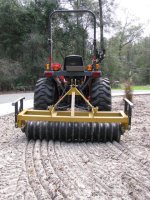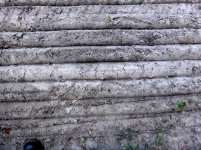I can confirm that curves can be planted and cultivated. I have several fields with terraces, come of them we cross over and some we can't, but either way I always try to follow the contour of the land. The trick is trying to keep the rows straight and evenly spaced in the curves and it can be done. I plant off the center of the tractor and not the wheel which makes things easier because your line of sight is a lot longer.
When planting a curve, you have to allow/compensate for the length of the tractor by slowly moving to the side of your marker in the curve, then bring it back in line when exiting the curve. This may sound little a big deal, but with a little practice you will get it. Making straight rows is all about two things (IMO). Making sure you are straight in line after turning around and paying attention to what you are doing. You can't be talking on the phone or adjusting the radio, unless you have GPS and then you can bake a cake if you want.
I mainly strip till with RR seed now, so I don't do much cultivating anymore, but the method is pretty much the same. Learn the sweet spot and let it go. I done it with 2, 4, 6 and 8 row equipment.


